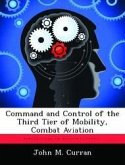From 1918 to 1990 airlift advocates used the speed and range of aircraft to develop an en route mobility system capable of maneuvering joint forces on a global scale. However, the demand for air mobility agility exceeded capabilities in the 1990s. Instead of pursuing aircraft performance improvements, the Air Force developed a dependence on intermediate basing that stagnated mobility capabilities. From 2001 to 2005 mobility operations in the Global War On Terror (GWOT) saturated the en route system, and uncovered the limits of American mobility. The source of this "mobility plateau" is linked to a doctrinal dependency on intermediate basing that diverts resources from advanced transport development. The 2006 QDR projects some potential gains, but falls short of achieving appreciable improvements in agility for joint forces. Transforming American airlift requires a new way of thinking to build doctrine that increases global agility. In the next 10 years, Effects-Based Mobility (EBM) will shape doctrine and enable leaders to focus on generating effects for joint forces at all levels of war. Most importantly, EBM will enable leaders to think beyond nominal improvements and focus on programs that significantly increase global agility. In 30 years, EBM will truly enable "global maneuver" and provide a new doctrine capable of triggering innovation in the aerospace industry.EBM fulfills the Headquarters Air Mobility Command Doctrine and Policy Division (HQ AMC/A5) request to develop new doctrine for air mobility. In order to tailor activities for the joint fight, the author merged Effects-Based Operations (EBO) with air mobility doctrine to develop the EBM concept. The author also applied modern techniques used in the aerospace industry to analyze air mobility systems. The results of this study propose EBM as a doctrinal method of significantly increasing global maneuver capability.
Hinweis: Dieser Artikel kann nur an eine deutsche Lieferadresse ausgeliefert werden.
Hinweis: Dieser Artikel kann nur an eine deutsche Lieferadresse ausgeliefert werden.








